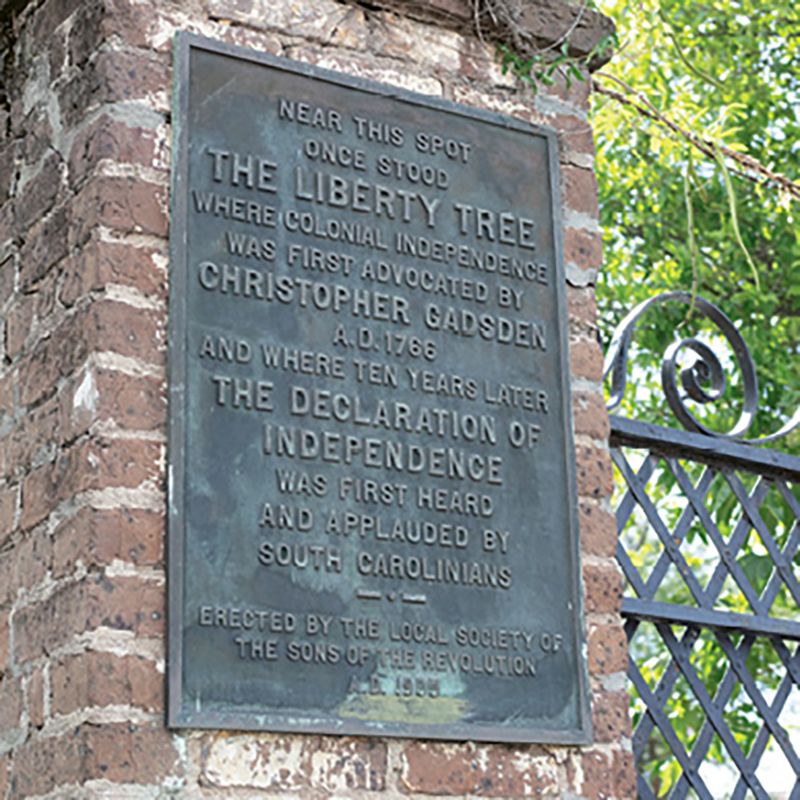Before the South Carolina flag’s famous palmetto, there was a different tree that just may have made the Palmetto State a reality.

A plaque near where the Liberty Tree once stood
The Liberty Tree was a massive oak located beyond the 1760s city limits of Charles Town—out in a pasture owned by Alexander Mazyck, near today’s Alexander and East Bay streets. Folks gathered there to openly discuss what could only be whispered about downtown: revolution. The outspoken Christopher Gadsden and many “mechanics” (skilled craftsmen) were angry at the British King and his local deputies. These rabble-rousers dubbed themselves the “Sons of Liberty;” their symbol became the Liberty Tree.
When the news of the Declaration of Independence finally reached Charleston in August 1776, it was read publicly under the tree’s branches. Recognizing such a potent symbol, the British cut the Liberty Tree down and burned its stump when they retook possession of the town in 1780. After the revolution, however, oral tradition states that patriots dug up the roots and crafted canes for those who helped liberate the country—including Thomas Jefferson. A 1905 plaque marks the spot where it stood, near 80 Alexander Street.